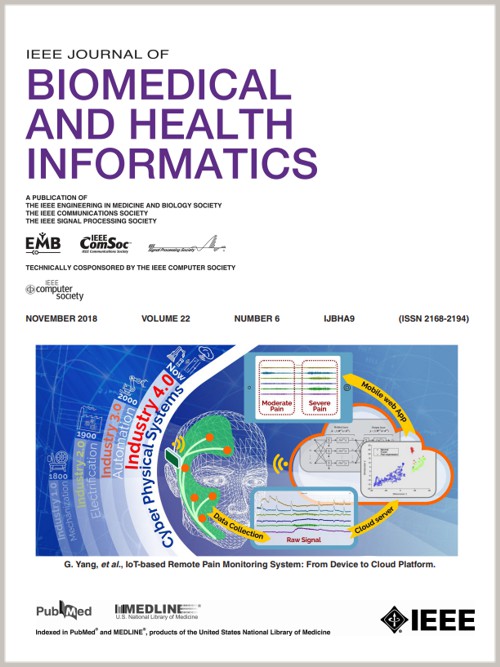Machine Learning Identification and Classification of Mitosis and Migration of Cancer Cells in a Lab-on-CMOS Capacitance Sensing Platform
IF 6.7
2区 医学
Q1 COMPUTER SCIENCE, INFORMATION SYSTEMS
IEEE Journal of Biomedical and Health Informatics
Pub Date : 2024-11-12
DOI:10.1109/JBHI.2024.3486251
引用次数: 0
Abstract
Cell culture assays play a vital role in various fields of biology. Conventional assay techniques like immunohistochemistry, immunofluorescence, and flow cytometry offer valuable insights into cell phenotype and behavior. However, each of these techniques requires labeling or staining, and this is a major drawback, specifically in applications that require compact and integrated analytical devices. To address this shortcoming, CMOS capacitance sensors capable of conducting label-free cell culture assays have been proposed. In this paper, we present a computational framework for further augmenting the capabilities of these capacitance sensors. In our framework, identification and classification of mitosis and migration are achieved by leveraging observations from measured capacitance time series data. Specifically, we engineered two time series features that enable discriminating cell behaviors at the single-cell level. Our feature representation achieves an area under curve (AUC) of 0.719 in the receiver operating characteristic (ROC) curve. Additionally, we show that our feature representation technique is applicable across arbitrary experiments, as validated by a leave-one-run-out test yielding an F-1 score of 0.803 and a G-Mean of 0.647.在实验室-CMOS 电容传感平台上对癌细胞的有丝分裂和迁移进行机器学习识别和分类。
细胞培养检测在生物学的各个领域都发挥着重要作用。免疫组化、免疫荧光和流式细胞术等传统检测技术为了解细胞表型和行为提供了宝贵的信息。然而,这些技术中的每一种都需要标记或染色,这是一个主要缺点,特别是在需要紧凑型集成分析设备的应用中。为了解决这一缺陷,有人提出了能够进行无标记细胞培养测定的 CMOS 电容传感器。在本文中,我们提出了一个计算框架,用于进一步增强这些电容传感器的功能。在我们的框架中,有丝分裂和迁移的识别和分类是通过利用测量到的电容时间序列数据来实现的。具体来说,我们设计了两个时间序列特征,可在单细胞水平上区分细胞行为。我们的特征表示在接收者操作特征曲线(ROC)上的曲线下面积(AUC)达到了 0.719。此外,我们还证明了我们的特征表征技术适用于任意实验,这一点已通过 "leave-one-run-out "测试得到验证,该测试的 F-1 得分为 0.803,G-Mean 为 0.647。
本文章由计算机程序翻译,如有差异,请以英文原文为准。
求助全文
约1分钟内获得全文
求助全文
来源期刊

IEEE Journal of Biomedical and Health Informatics
COMPUTER SCIENCE, INFORMATION SYSTEMS-COMPUTER SCIENCE, INTERDISCIPLINARY APPLICATIONS
CiteScore
13.60
自引率
6.50%
发文量
1151
期刊介绍:
IEEE Journal of Biomedical and Health Informatics publishes original papers presenting recent advances where information and communication technologies intersect with health, healthcare, life sciences, and biomedicine. Topics include acquisition, transmission, storage, retrieval, management, and analysis of biomedical and health information. The journal covers applications of information technologies in healthcare, patient monitoring, preventive care, early disease diagnosis, therapy discovery, and personalized treatment protocols. It explores electronic medical and health records, clinical information systems, decision support systems, medical and biological imaging informatics, wearable systems, body area/sensor networks, and more. Integration-related topics like interoperability, evidence-based medicine, and secure patient data are also addressed.
 求助内容:
求助内容: 应助结果提醒方式:
应助结果提醒方式:


